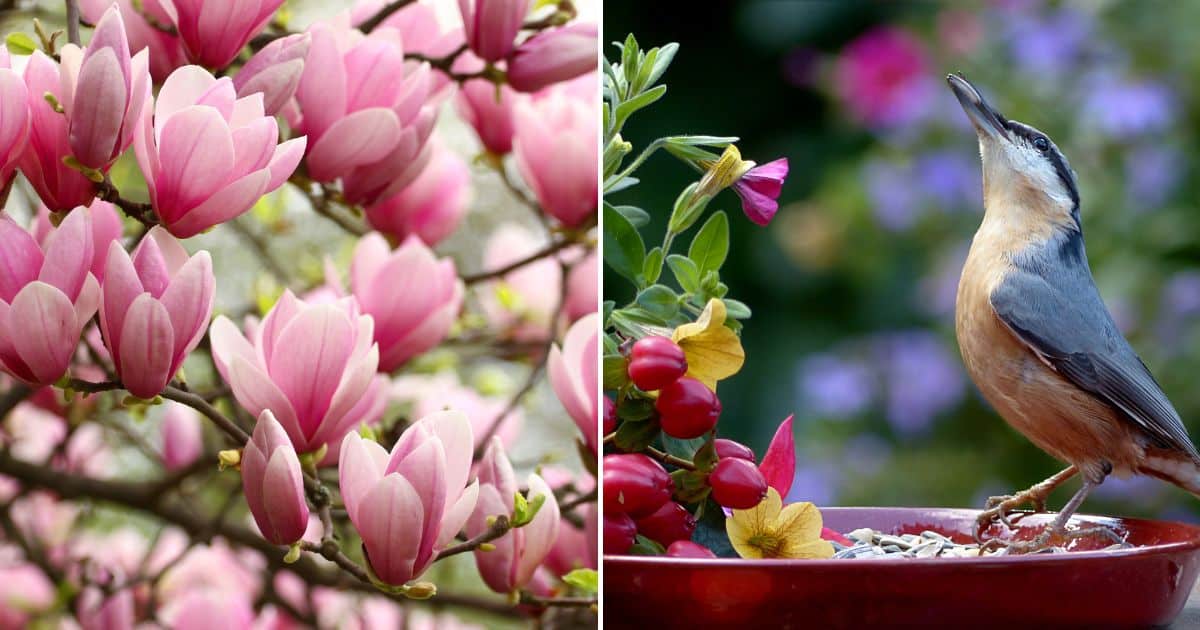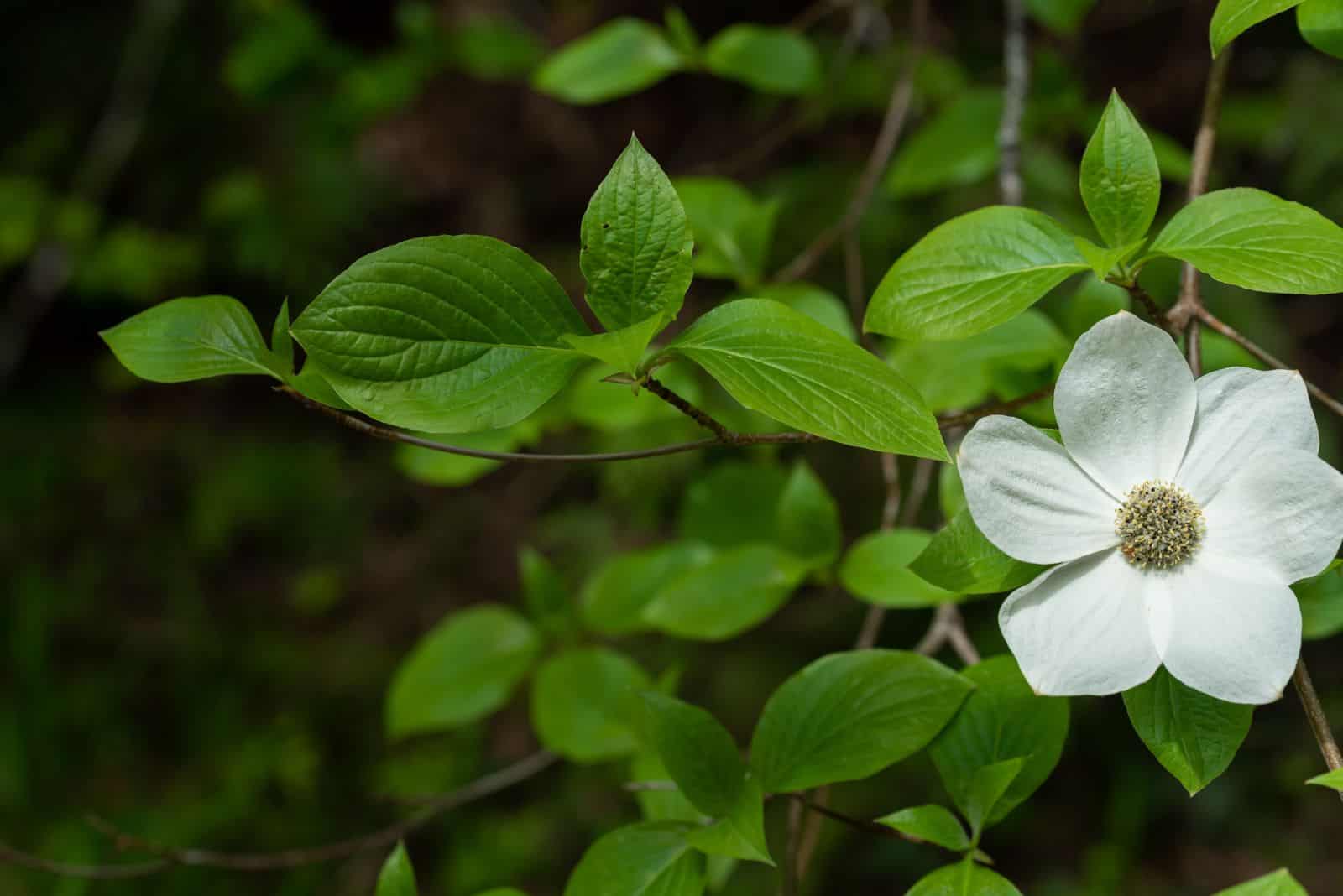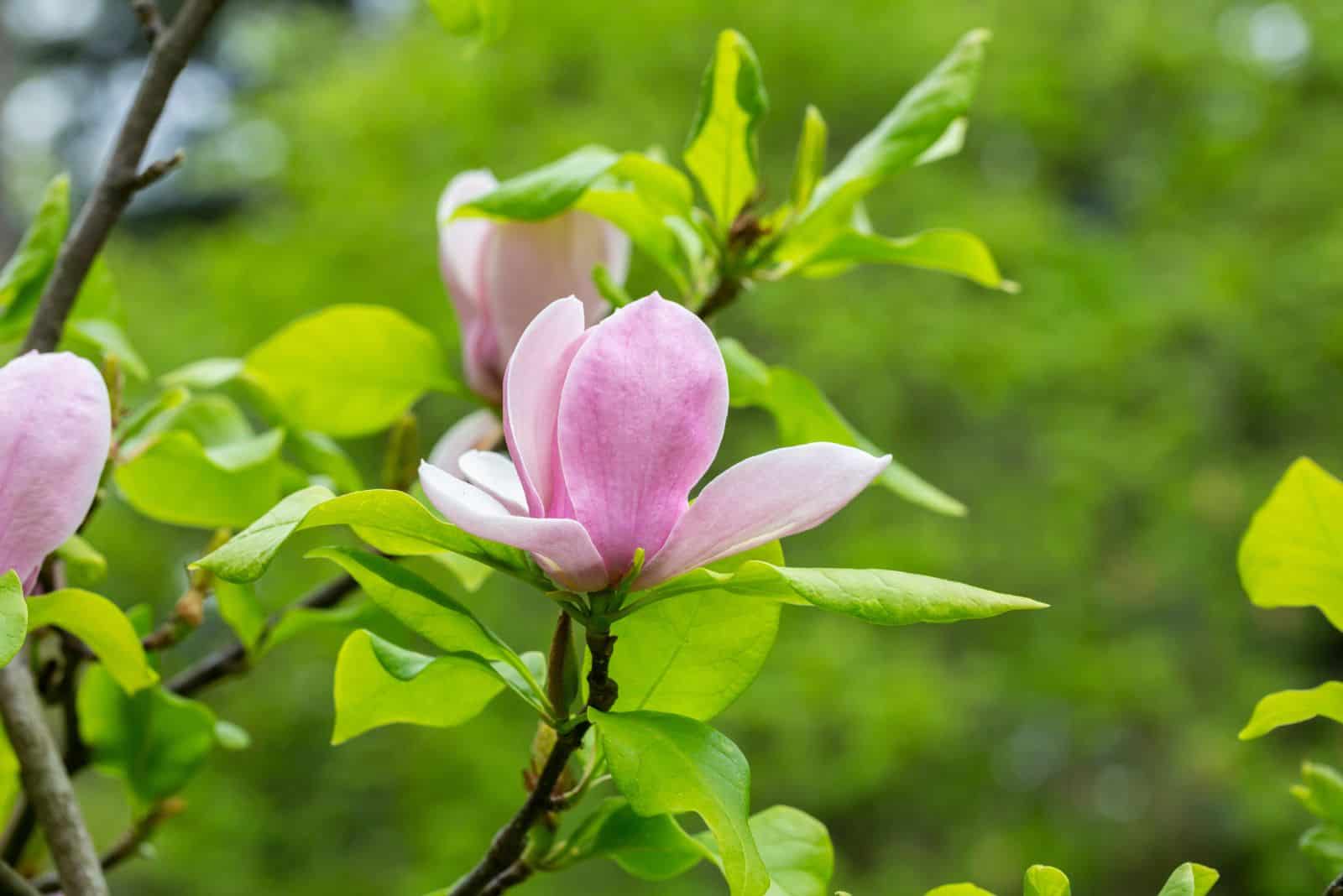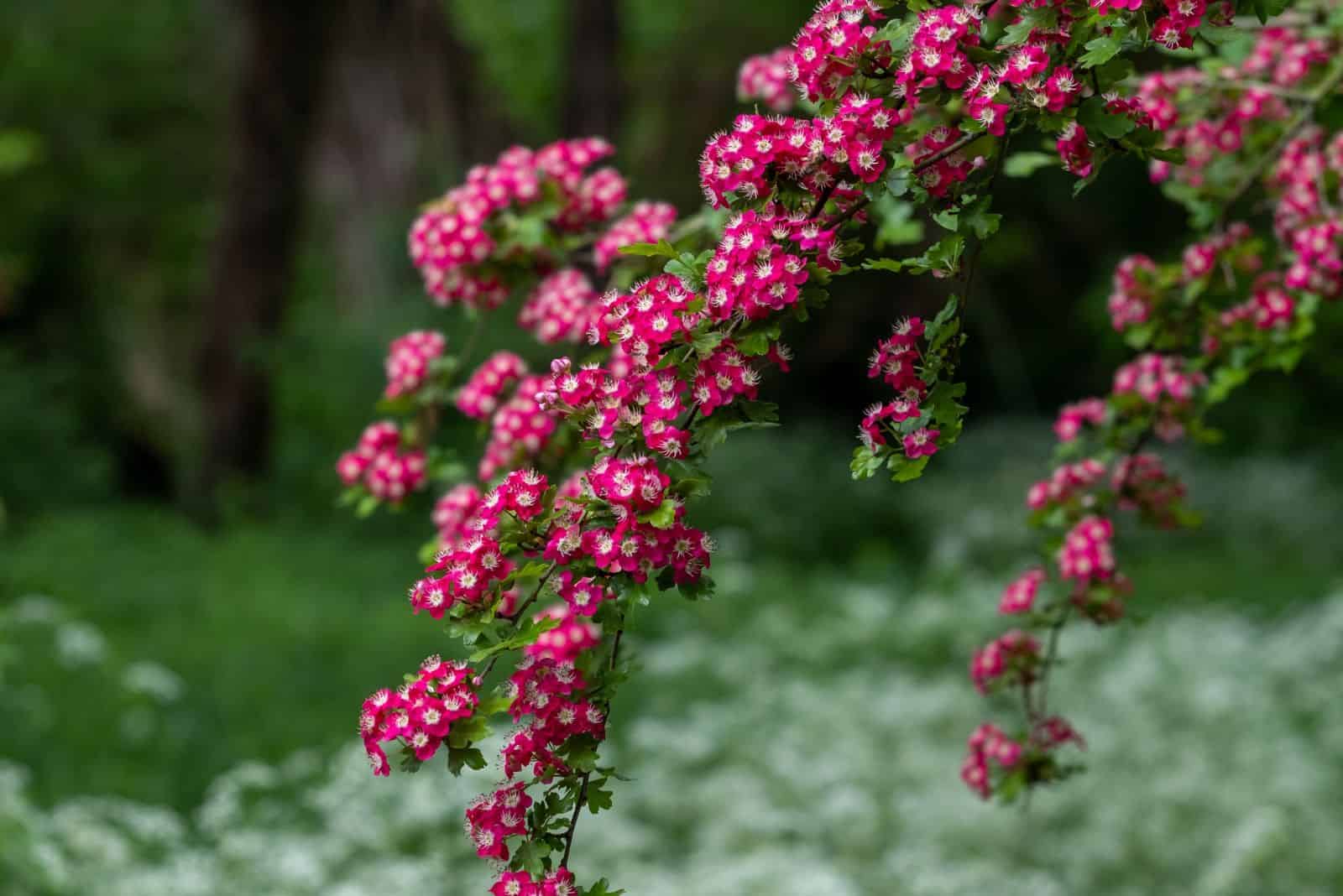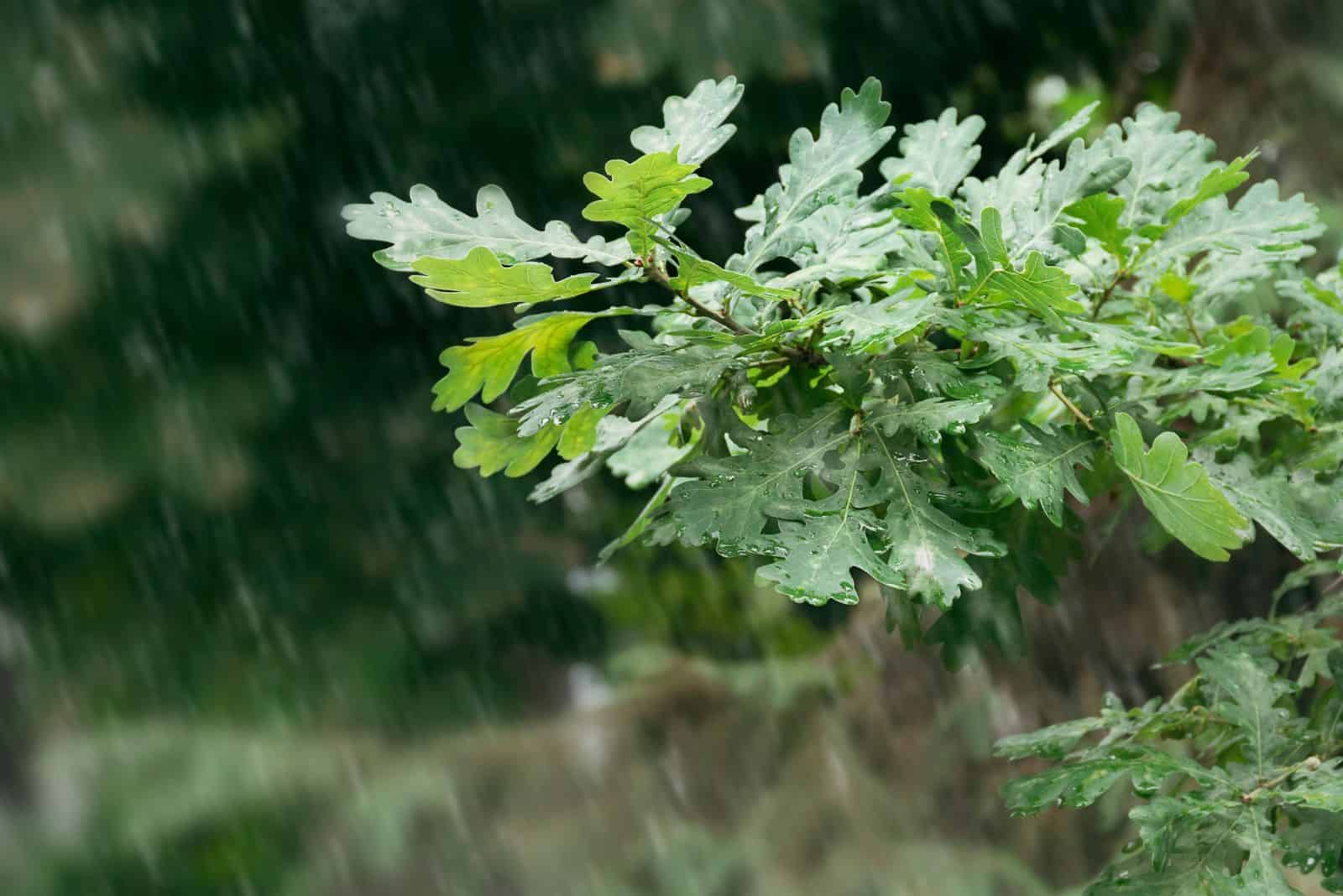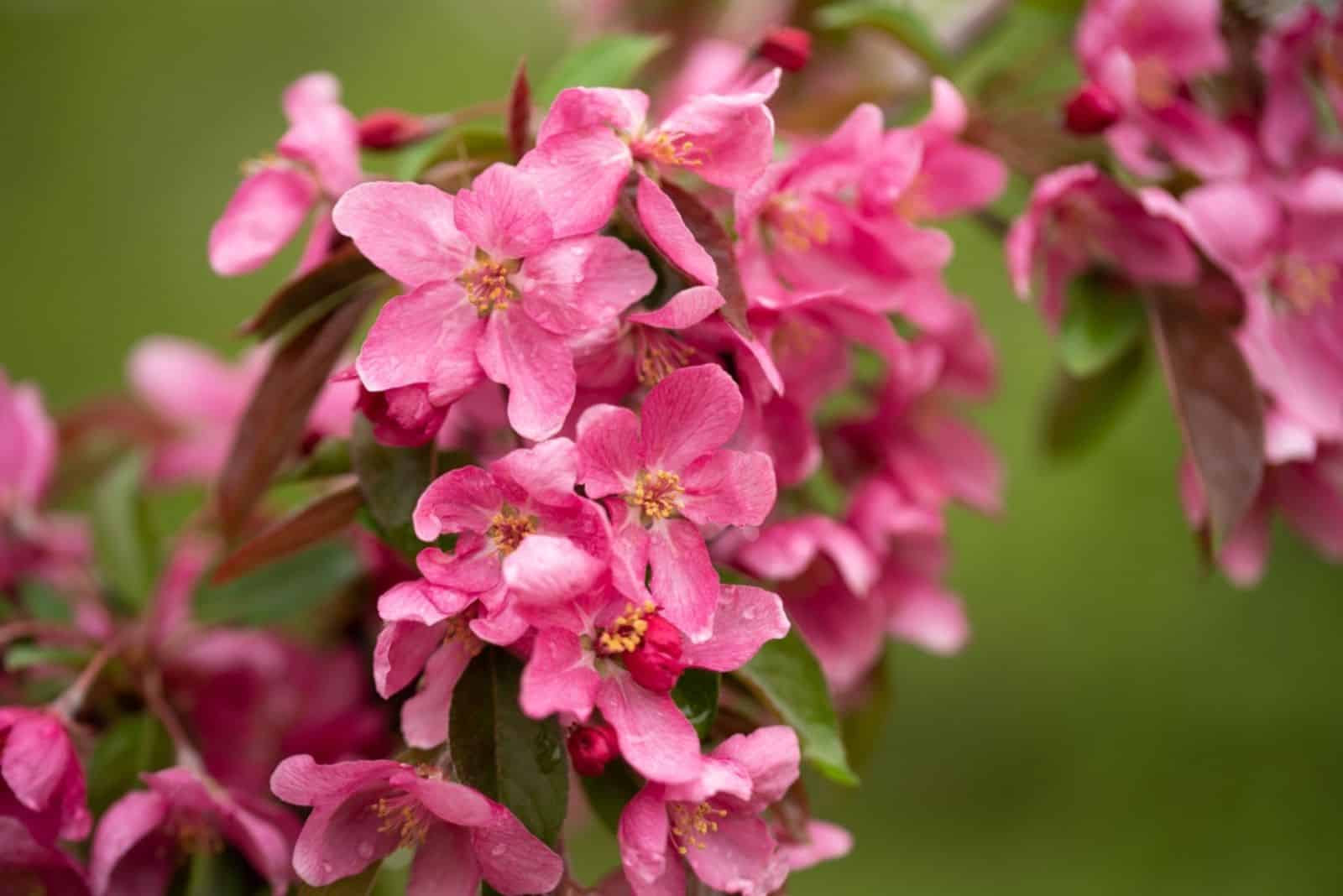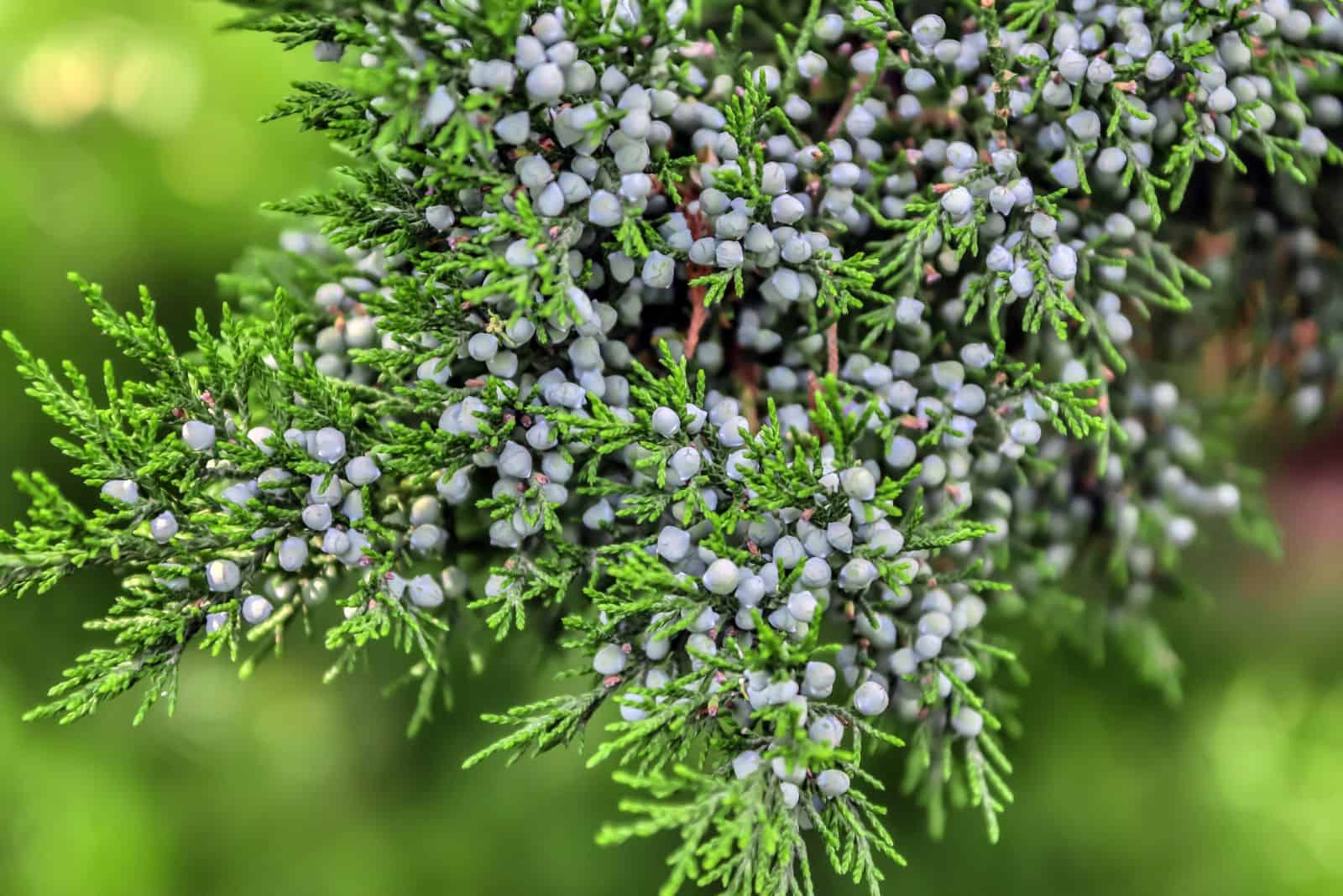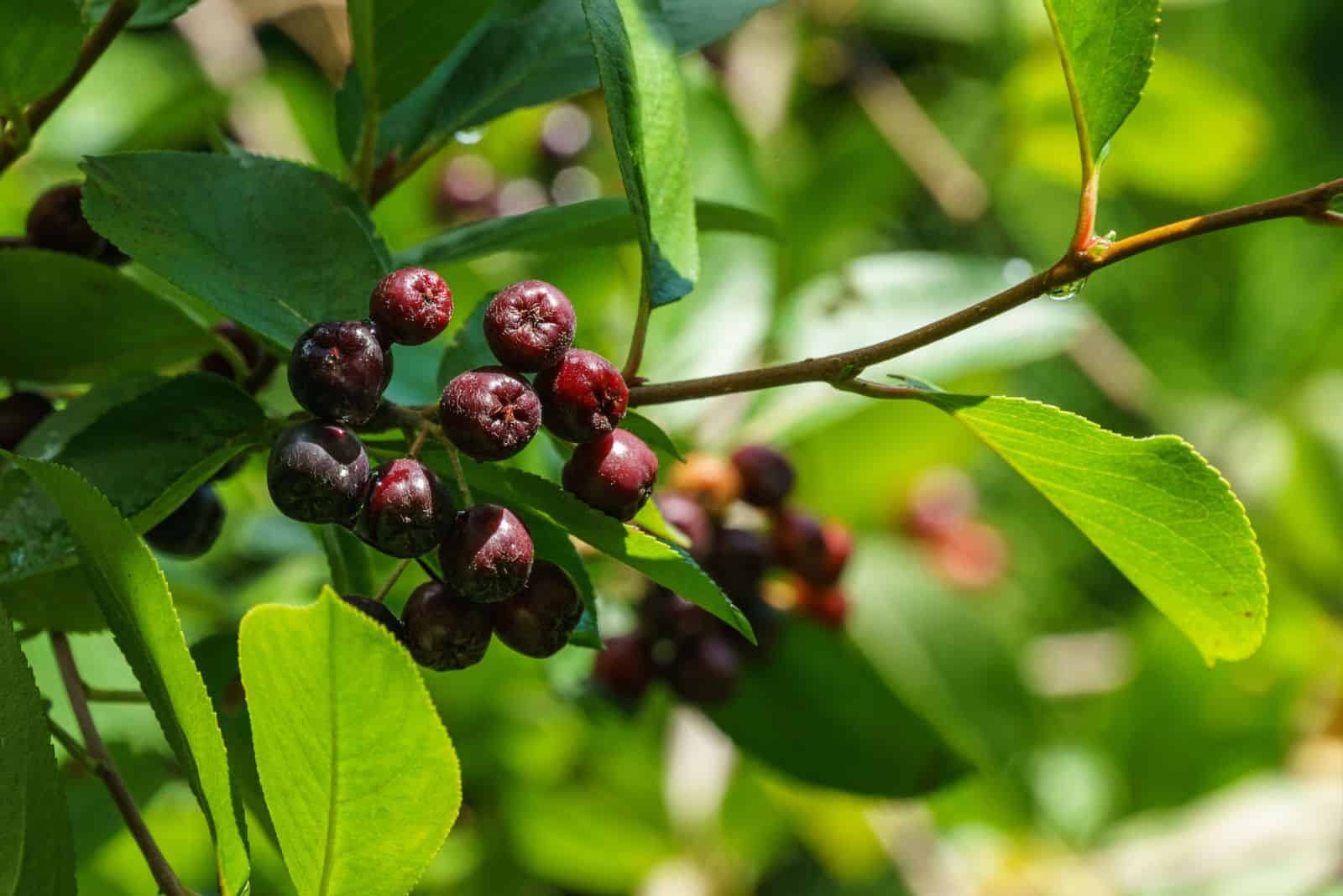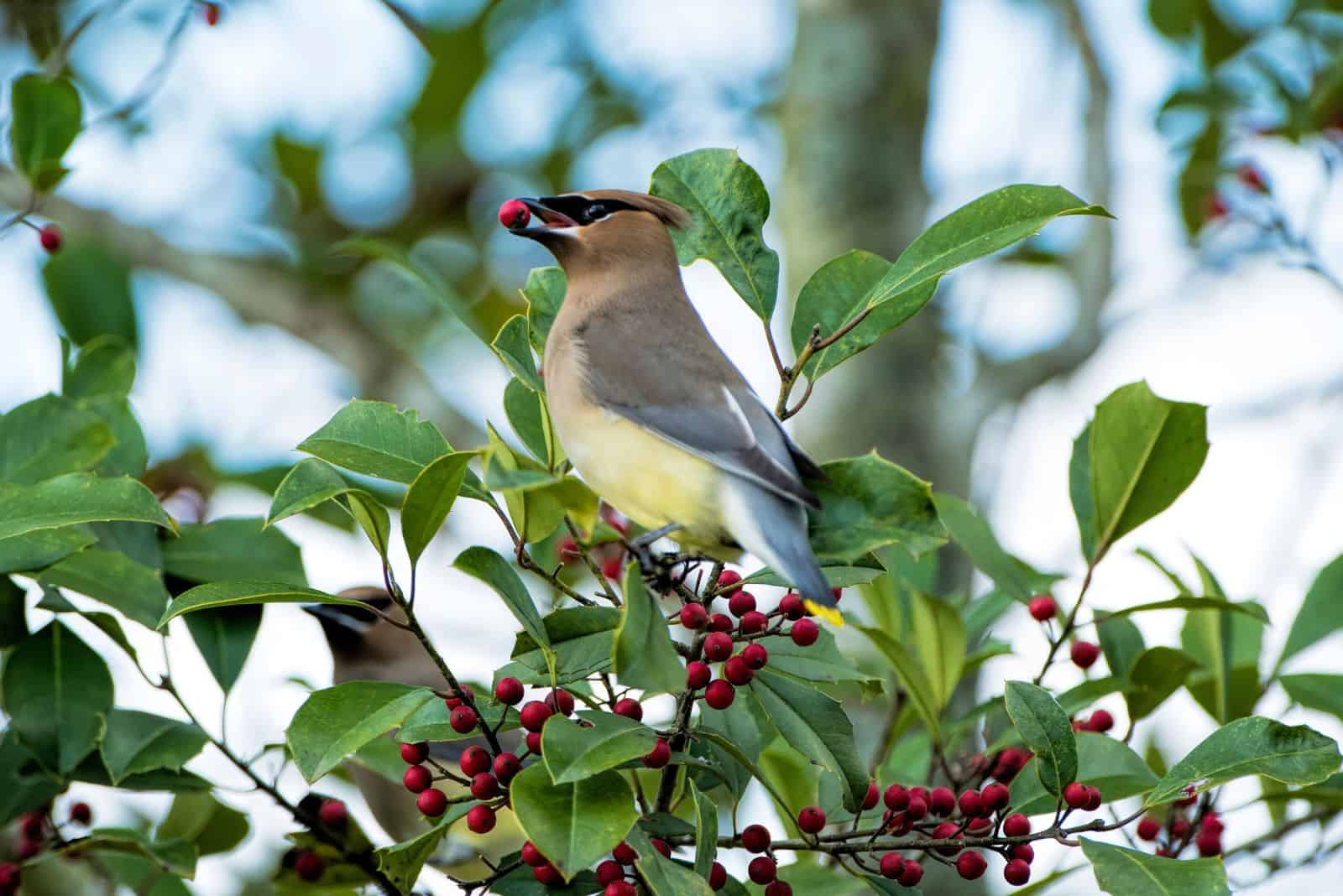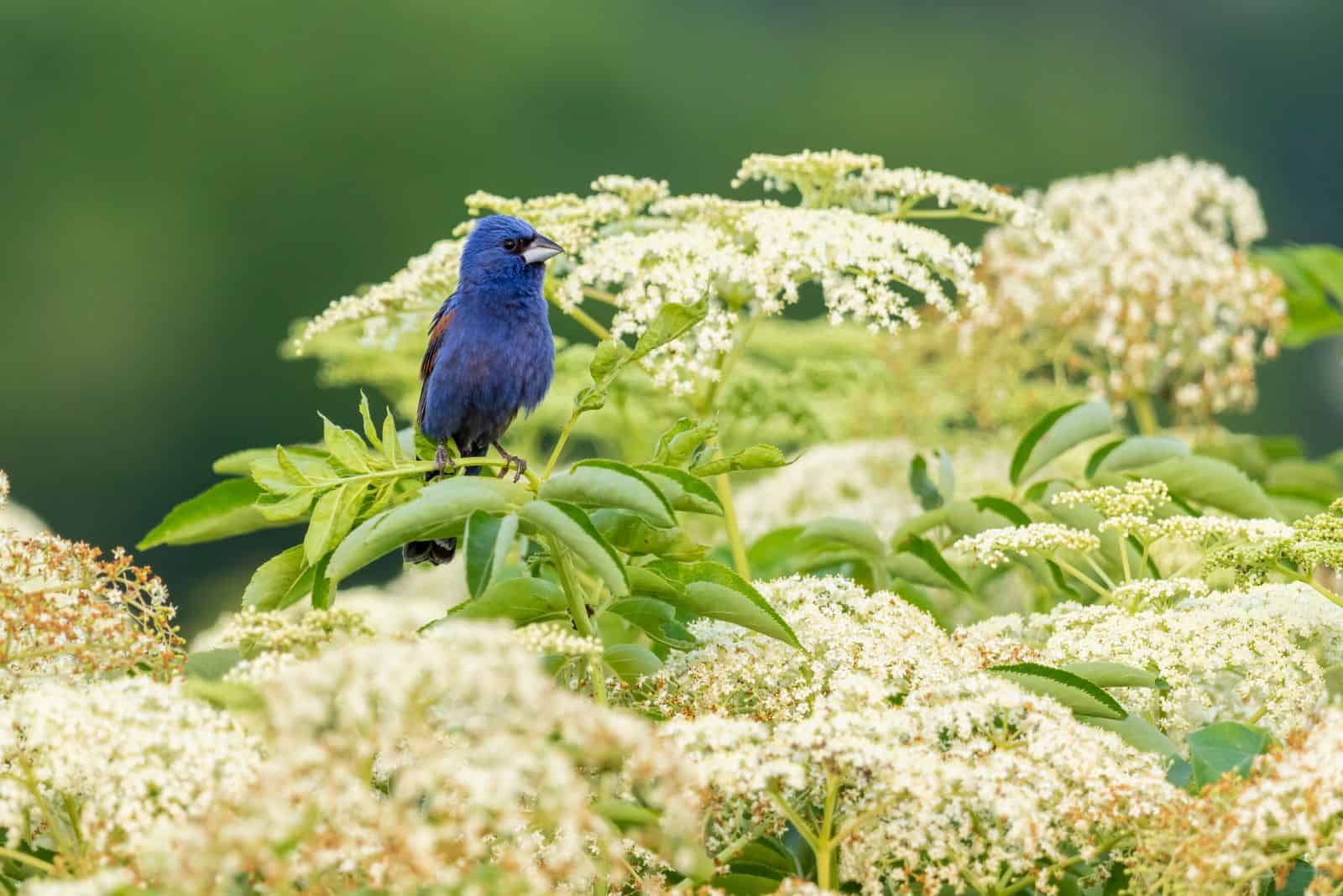If you want to fill your backyard with the delightful melodies of song birds, and at the same time promote a harmonious ecosystem, then planting certain trees can make all the difference!
Bird-friendly trees can attract songbirds with their delicious fruits, seeds, and suitable space for them to create their lovely nests. With melodious bird songs and beautiful scenery, you get to experience a real-life fairy tale!
In this article, we are going to cover some of the best trees to attract songbirds, and also share some growing tips!
1. Dogwood
When considering growing trees to attract cardinals or other songbirds, start with native trees first. Dogwood trees can grow well in hardiness zones 5 through 9, so keep that in mind!
These deciduous trees produce beautiful flowers and vibrant leaves, which can truly add charm and elegance to your backyard!
In addition, they also produce clusters of red and white berries that birds love munching on. To attract even more birds, consider adding bird feeders.
Dogwood is a low maintenance tree that can reach a medium size. The best variety for attracting songbirds would be Cherokee Princess dogwood, Kousa dogwood, or Flowering dogwood.
2. Magnolia
With their captivating, fragrant flowers and spicy foliage, Magnolia is definitely one of the best trees to plant near houses.
You would not be the only one mesmerized by its beauty – songbirds also absolutely love visiting Magnolia trees for their sweet fragrance and abundance of nectar.
This majestic tree grows best in USDA hardiness zones 7 through 10. It requires moderate watering and well-draining, acidic soil to grow and thrive.
What’s also great is that Magnolia can also be grown in pots, which is perfect if you have a limited space in your backyard.
3. Hawthorn
Hawthorn trees are excellent for sprucing up your yard, but also promoting a healthy ecosystem. With their lovely white flowers and red berries, they can attract lots of birds and beneficial insects!
They usually attract robins, waxwings, and cedar waxwings – these love to hide behind the glossy, dark leaves in the summer!
The green foliage turns yellow and orange in the fall, thus adding a golden color to your outdoor space.
Hawthorns grow best in USDA hardiness zones 4 through 8. They require little care. The best time to plant these trees is in early spring or fall, ensuring they have enough time to establish their roots before the harsh winter or summer arrives.
4. Northern White Oak
Oak trees are known for providing habitats to a variety of birds because they have dense foliage that can offer a safe place to create nests.
They also provide abundant acorns, which serve as a food source for birds, especially blue jays, warblers, woodpeckers, vireos, and nuthatches.
With their strung trunks and broad canopies, they can make a great addition to your backyard and at the same time provide you with some privacy.
You can find White oak tree seeds here.
5. Crabapple
Crabapple are trees with purple flowers and dense leaf growth that is perfect for nesting. They produce seeds and small fruits that serve as food sources for songbirds and insects.
These ornamental trees usually attract bluebirds, cardinals, robins, finches, grosbeaks, and many more. If you want to attract bluebirds, then you should also put up a bluebird feeder next to the tree.
Crabapple trees have a long blooming season. They require minimal maintenance – watering once a week and growing in acidic soil will keep this tree happy and healthy.
6. Eastern Red Cedar
The Eastern Red Cedar is a hardy evergreen tree that provides year-round beauty to your backyard, but also a year-round shelter for birds!
These trees have dense foliage with vibrant green leaves that provide excellent protection for songbirds. They also produce small blue berries called juniper berries, which birds simply love munching on!
Songbirds such as robins, bluebirds, cardinals, and finches are particularly drawn to the nutritious and energy-rich berries offered by this tree.
The Eastern Red Cedar is also drought tolerant, and it can easily adapt to different soil conditions. The tree thrives in USDA hardiness zones 2 through 9.
7. Chokeberry
Chokeberry trees are perfect for those who live in North America. This is a deciduous shrub-to-tree sized woody plant that features glossy green leaves and clusters of small, dark berries that last until the winter months.
By planting chokeberry trees in your yard, you provide a reliable food source for songbirds during the colder months when other food options may be scarce. Due to their dense growth habits, they also provide an excellent shelter for birds.
Mockingbirds, thrushes, and warblers absolutely love these delicious berries!
8. American Holly
The famous American Holly, otherwise known as Ilex opaca, is an evergreen tree that exhibits deep green leaves and vibrant red berries. These trees provide a nutritious food source for songbirds during the colder months.
Just imagine the scenery with snow, red berries, and a lot of birds flying around in your backyard!
These trees usually attract cedar waxwings, robins, and bluebirds. Their dense foliage and branches offer excellent shelter and nesting space.
Also check: Who’d Win This Christmas Fight: Mistletoe vs Holly?
9. Elderberry
The last tree is the best at attracting songbirds – Elderberry. Not only are these trees known for their attractive appearances, but they are also famous for their ability to attract a variety of songbirds to your backyard.
These deciduous trees feature clusters of creamy white flowers in the spring, followed by dark purple berries in the summer.
Songbirds like warblers, thrushes, and orioles absolutely love these sweet and nutritious elderberries. These birds also love hiding behind the dense foliage and branches.
Elderberry trees are low maintenance. They thrive in the USDA hardiness zones from 3 through 7.

